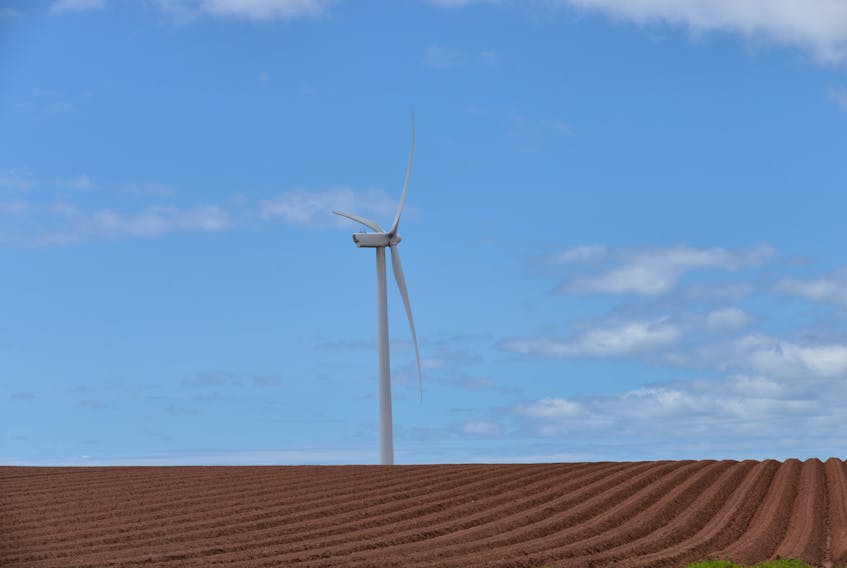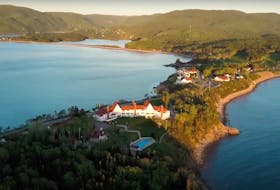The profit margins are as tight today as they were nearly two decades ago, when Carl Brothers launched Frontier Power Systems.
But the goals of the Georgetown, P.E.I.-based wind turbine manufacturing, installation and project management company go beyond the bottom line and involve creating well-paying local jobs and advancing wind energy technology to provide isolated communities in North America with a sustainable form of energy, and further displace their reliance on diesel fuel. This also gives remote communities the ability to produce, manage and own their own sustainable energy system, explained Brothers, the company's founder and president.
"I'll tell you, for a guy that should be retired, this is a pretty exciting way to spend your days," he said. "It's almost a religion for me."

Wind farms
Brothers grew up in Cardigan and studied mechanical engineering at the University of New Brunswick. He worked at the Wind Energy Institute of Canada in North Cape, P.E.I. and then started Frontier Power Systems in 2002.
The company has built wind farms on P.E.I. in North Cape (10.6-megawatt capacity), Summerside (12 megawatts), East Point (30 megawatts) and then Hermanville (30 megawatts) in 2014. These wind farms are owned by the P.E.I. Energy Corp., except for Summerside, which is owned by the municipality.
"Wind energy has really been my life. And trying to get economic activity and economic development in P.E.I. has also been a big objective of mine. It's starting to come together," said Brothers.
In total, there are eight wind farms on P.E.I. that have a production capacity of 204 megawatts, or 25 per cent of the Island's electricity supply. Frontier has also installed wind turbines in New Glasgow and Truro, N.S.
A 30-megawatt expansion at East Point (the Eastern Kings Wind Farm expansion) was approved by the P.E.I. government with several conditions, but in November, the Rural Municipality of Eastern Kings council voted against the project. That decision is currently under appeal with the Island Regulatory and Appeals Commission.
After the Hermanville project, the company was looking for something to do. So, Brothers decided to invest in better wind technology for remote communities that rely on diesel fuel for power.

Next-gen technology
In 2016, Frontier received a $1.8 million (conditionally repayable) contribution from the Atlantic Canada Opportunities Agency (ACOA) and a $100,000 grant from the P.E.I. government to develop its Next-Gen Arctic Power System. Frontier also contributed about 25 per cent of its own money towards the Next-Gen system.
Since then, the company has been busy with nine wind-diesel energy projects in Alaska that are either completed or underway, involving improved turbine, battery energy and thermal storage systems, load regulators, remote diagnostics systems (from P.E.I. if necessary), and a micro grid control system that allows a community to manage its wind and diesel energy usage.
The company is still working in Alaska, but it also has its sights set on bringing the Next-Gen technology to Canada this year and upgrading its earlier Ramea project.
Ramea is a small island community off the coast of Newfoundland. In 2004, Frontier set up a wind-diesel project involving six 65 kilowatt turbines that generate around 500,000 kilowatts of electricity per year, or 15 per cent of the community's power needs. Now, the company is proposing Ramea 2, that aims to displace 50 per cent of diesel energy per year, or around 500,000 litres of fuel, with the Next-Gen technology.

Wind energy in Atlantic Canada as of December 2019
- P.E.I. — 104 turbines, 204 megawatts energy output
- Nova Scotia — 309 turbines, 616 megawatts
- New Brunswick — 119 turbines, 314 megawatts
- Newfoundland and Labrador — 27 turbines, 55 megawatts
Source: Canadian Wind Energy Association
Tilt-up towers
Brothers said a key to the Ramea 2 project and further displacing remote communities' reliance on diesel fuel is a 100-kilowatt redesigned medium-sized wind turbine system with an advanced drive train that sits on a 50-metre high, tilt-up tower with a 25-metre (in diameter) rotor. This is an improvement over the company's 25-metre high free-standing towers with 17-metre rotors.
The advanced turbine with the larger rotor is expected to generate 16 per cent more wind energy than the earlier model, while the tilt-up tower is more practical for remote communities, since it can be more easily erected with smaller equipment, such as a backhoe and a gin pole. Putting up free-standing towers requires larger equipment, such as cranes, which can be difficult to transport and maintain in remote northern communities. The new tower and turbine are still in the prototype stage, but once they're ready and the cost-effective upgrades are in place, Ramea will be able turn off its diesel source for extended periods of time, which saves the community money and reduces its environmental impact.
The Ramea 2 project is expected to cost around $7-million with government funding as well as some up-front money from Frontier.

Growing business
Frontier has a staff of six engineers and seven technicians at its 10,000 square-foot facility in Georgetown, where the company manufactures and assembles the various components of the wind energy system, including making the large Fiberglas propeller blades. Brothers adds that the logistics side of shipping the wind turbines and other components to Alaska once off-Island can be interesting, since it involves a lot of planning, a long train ride to Seattle, and then a barge trip up north.
"If you miss the barge by an hour, you miss it by a year," he said with a laugh.
With the new technology comes new opportunities. Besides Ramea 2, Brothers said Frontier has another wind energy project planned for Alaska and one in Nunavut in the next couple of years. And as the business grows, so to does the need to hire more staff. But growth will also require someone to focus more on the business side of the operations.
"I'm the guy that hangs off a turbine. I know this technology right to the core. But in terms of managing a company that's growing rapidly, where you have to get the financing and marketing, I'll probably bring someone else in," he said.
"There's not too many people in this business, and nobody's been doing it longer than me ... What we've done in Alaska has been pretty impressive, and I hope we can do that in Canada as well."









